Telegraph Russian inventor Pavel Schilling
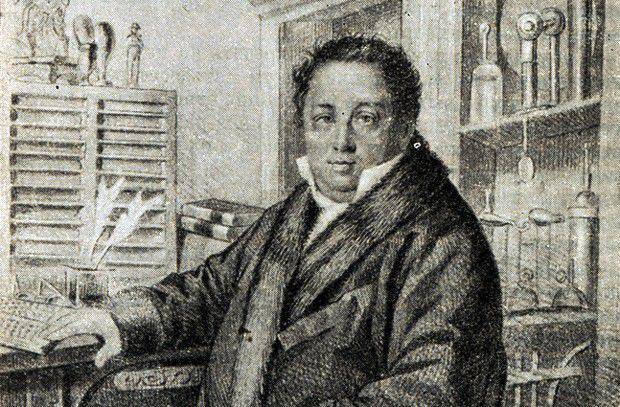
As a friend of Alexander Pushkin, he invented the world's first telegraph, electric mine exploding and the most resistant cipher
Inventor of the world's first telegraph and author of the first in stories of mankind undermining a mine by an electric wire. The creator of the world's first telegraph code and the best secret code in the XIX century. A friend of Alexander Sergeevich Pushkin and the creator of the first in Russia lithography (a method of replicating images). The Russian hussar who stormed Paris, and the first European researcher of Tibetan and Mongolian Buddhism, a scholar and diplomat. All this is one person - Pavel Lvovich Shilling, an outstanding Russian inventor of the Pushkin era and the Napoleonic wars. Perhaps one of the last representatives of the Pleiad of Encyclopedists, the "universal scientists" of the Enlightenment, who left a bright mark in many often distant from each other spheres of world science and technology.
Oh, how many wonderful discoveries to us
Prepare the spirit of enlightenment
And Experience, son of difficult mistakes,
And Genius, paradoxes friend ...
These famous Pushkin's lines, according to the majority of researchers of the great poet, are dedicated to Pavel Schilling and written in the days when their author was going with him on an expedition to the Far East, to the borders of Mongolia and China.
Everybody knows the genius of Russian poetry, while his learned friend is less well known. Although in Russian science and history, he rightfully occupies an important place.
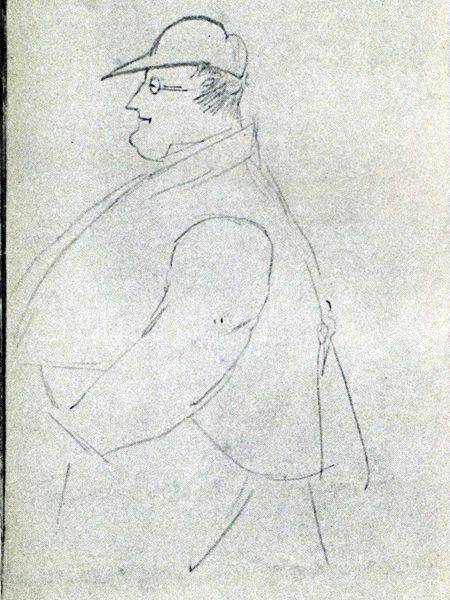
The world's first electric mine
The future telegraph inventor was born on the lands of the Russian Empire in Reval 16 on April 1786. In accordance with the origin and tradition of the infant, Paul Ludwig, Baron von Schilling von Kanstadt, was named. His father was a German baron who switched to the Russian service, where he rose to a colonel, and received the highest military award for bravery - the Order of St. George.
A few months after the birth, the future author of many inventions was in the very center of Russia, in Kazan, where his father commanded the Nizovsky Infantry Regiment. All of Paul's childhood passed here, here he became Pavel, from here in 11 years after the death of his father went to Petersburg to study in the cadet corps. In the documents of the Russian Empire, he was recorded as Pavel Lvovich Schilling - under this name he entered Russian history.
During his studies, Pavel Schilling showed abilities in mathematics and topography, so after graduating from the cadet corps in 1802, he was enrolled in the Quartermaster's suite of His Imperial Majesty, the prototype of the General Staff, where the young officer was engaged in preparing topographic maps and staff calculations.
In those years, in the center of Europe, a big war was brewing between Napoleonic France and Tsarist Russia. And General Staff Officer Pavel Schilling is transferred to the Ministry of Foreign Affairs, serving as secretary in the Russian Embassy in Munich, then the capital of an independent Bavarian state.
Schilling became an employee of our military intelligence - at that time, the functions of a diplomat and intelligence officer were mixed even more than in our time. Bavaria was then the actual vassal of Napoleon, and Petersburg needed to know about the internal situation and the military potential of this kingdom.
But Munich at that time was also one of the centers of German science. Revolving in the circles of high society, the young diplomat and intelligence officer got acquainted not only with aristocrats and military men, but also with prominent European scientists of his time. As a result, Pavel Schilling became interested in the study of oriental languages and experiments with electricity.
At that time, mankind only discovered the secrets of the movement of electric charges, various “galvanic” experiments were considered more like amusing entertainment. But Pavel Schilling, suggested that a spark of electric charge in the wires can replace the powder wick in military science.
In the meantime, a big war began with Napoleon, in July 1812, the Russian embassy was evacuated to Petersburg, and here Pavel Schilling immediately offered his invention to the military department. He undertook to undermine the powder charge under water so that minefields could be made that could reliably cover the capital of the Russian Empire from the sea. At the height of the Patriotic War, when Napoleon’s soldiers occupied Moscow, several of the world's first experimental explosions of powder charges under water with electricity were carried out on the Neva River in St. Petersburg.
Maps for the Russian army
Experiments with electric mines were successful. Contemporaries called them "far-ignition". In December, the 1812 of the year was formed by the Life Guard Battalion of the Sapper, in which they continued their further work on Schilling's experiments on electric ignition and undermining. The author of the invention, having refused a comfortable diplomatic rank, volunteered to join the Russian army. With the rank of captain-in-chief of the Sumy Hussar Regiment, he went through all the major battles with Napoleon in Germany and France in 1813 – 1814 years. For battles on the outskirts of Paris, Captain Schilling was awarded a very rare and honorable award - a nominal weapons, saber with the inscription "For courage." But his contribution to the final defeat of Napoleon’s army lay not only in the courage of cavalry attacks - it was Pavel Schilling who provided the Russian army with topographic maps for an offensive in France.
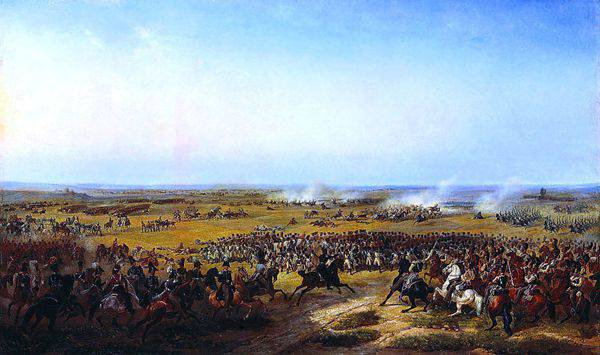
Earlier, maps were drawn by hand, and in order to supply all the numerous Russian units with them, there was neither the time nor the necessary number of skilled specialists. Hussar officer Schilling at the end of 1813 of the year informed Tsar Alexander I that German Mannheim had the world's first successful lithographic experiments — copying drawings.
The essence of this latest technology at that time was that a specially selected “lithographic” ink is applied to a specially selected and ground limestone. Then the surface of the stone is “etched” - processed with a special chemical composition. After such processing, the etched areas that are not covered with lithographic ink are repelled by printing ink, and, on the contrary, the printing ink easily adheres to the places where the drawing was applied. This makes it possible to quickly and efficiently make numerous prints of drawings from such a “lithographic stone”.
By order of the king, Pavel Schilling with a squadron of hussars arrived in Mannheim, where he found the specialists who had previously participated in lithographic experiments and the necessary equipment. In the rear of the Russian army under the leadership of Schilling, they quickly organized the production of a large number of maps of France, urgently needed on the eve of the decisive offensive against Napoleon. At the end of the war, the workshop created by Schilling relocated to Petersburg, to the Military Topographical Depot of the General Staff.
The most resistant cipher of the XIX century
In Paris, captured by the Russians, while everyone is celebrating a victory, the hussar Schilling first of all meets the French scientists. Particularly often, on the basis of interest in electricity, he communicates with Andre Amper, a man who entered the history of world science as the author of the terms "electric current" and "cybernetics", by whose name the descendants will call the unit for measuring current.
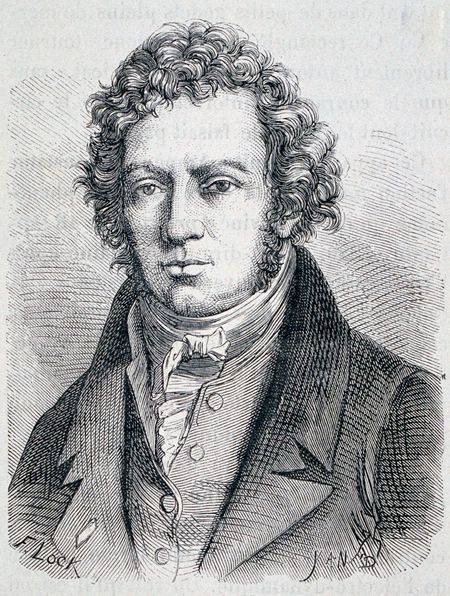
But in addition to the "electric" hobby of the scholar Hussar Schilling, a new big task emerges - he studies the captured French ciphers, learns to decipher others and create his own cryptography techniques. Therefore, shortly after the defeat of Napoleon, the hussars Shilling took off his uniform and returned to the Ministry of Foreign Affairs.
In the Russian Ministry of Foreign Affairs, he officially engaged in the creation of a lithographic printing house — in diplomatic activity, then, a considerable part was lively correspondence, and technical copying of documents helped speed up work and facilitate the work of many scribes. As Schilling's friends joked, he generally became interested in lithography because his active nature could not withstand tedious rewriting by hand: “Schilling, impatient by nature, groaned at his desk and once said that this prolonged copying of papers could have been avoided by using lithography, which at that time was hardly known to anyone ... ".
But the creation of lithography for the Ministry of Foreign Affairs was only the external part of his work. In reality, Pavel Schilling works on the Secret Expedition of the Ciffere, as the Foreign Ministry’s Encryption Division was then called. It was Shilling who was the first in the history of world diplomacy to introduce into practice the use of special bigram ciphers — when, using a complex algorithm, the pairs of letters are ciphered using a complex algorithm, but arranged not in a row, but in the order of another specified algorithm. Such ciphers were so complex that they were used until the advent of electrical and electronic encryption systems during the Second World War.
The theoretical principle of bigram encryption was known long before Schilling, but it was so complicated and time-consuming for manual work that it was not used in practice before. Schilling also invented a special mechanical device for such encryption - a folding table pasted on paper, which made it easy to encrypt the digrams.
At the same time, Schilling additionally strengthened bigram encryption: he introduced "dummies" (encryption of individual letters) and the addition of text with a chaotic character set. As a result, such a cipher became so stable that European mathematicians needed more than half a century to learn how to break it, and Pavel Schilling himself rightfully earned the title of the most prominent Russian cryptographer of the XIX century. Within a few years after the invention of Schilling, not only Russian diplomats, but also military men used the new ciphers. By the way, it was the hard work on the ciphers that protected Pavel Schilling from enthusiasm for the fashionable ideas of the Decembrists and, perhaps, saved an outstanding person for Russia.
"Russian Cagliostro" and Pushkin
All contemporaries familiar to him, who left their memoirs, agree that Pavel L. Schilling was an extraordinary person. And in the first place, everyone notes his extraordinary interpersonal skills.
He was struck by the high society of Petersburg with the ability to play chess at once in several games, without looking at the boards and always winning. Schilling, who liked to have fun, entertained Petersburg society not only with games and interesting stories, but also with various scientific experiments. Foreigners called him "Russian Cagliostro" - for the mysterious experiments with electricity and the knowledge of the then mysterious Far East.
Pavel Schilling became interested in the eastern, or, as they said, "oriental" countries as a child, when he grew up in Kazan, then the center of Russian trade with China. Even during the diplomatic service in Munich, and then in Paris, where then was the leading European center of oriental studies, Pavel Schilling studied Chinese. As a cryptographer, a specialist in cipher, he was attracted by the mysterious hieroglyphs and incomprehensible Eastern manuscripts.
The Russian diplomat Shilling embodied his interest in the East in practice. Having established a new encryption, in 1830, he volunteered to lead a diplomatic mission to the borders of China and Mongolia. Most diplomats preferred enlightened Europe, so the king without hesitation approved the candidacy of Schilling.
One of the participants of the eastern expedition was to be Alexander Sergeevich Pushkin. While still engaged in lithography, Schilling could not resist the “hooligan act”, he wrote and reproduced in lithographic way the poems of Vasily Lvovich Pushkin - uncle Alexander Sergeevich Pushkin, a famous writer in Moscow and St. Petersburg. So the first manuscript in Russian was born, reproduced by technical copying. After the victory over Napoleon and the return to Russia, Vasily Pushkin introduced Schilling to his nephew. Alexander Pushkin's acquaintance with Shilling grew into a long and strong friendship.
7 January 1830, Pushkin appeals to the chief of gendarmes, Benkendorf, to enlist him on the Schilling expedition: "... I would ask for permission to visit China with the embassy that goes there." Unfortunately, the king did not include the poet in the list of members of the diplomatic mission to the borders of Mongolia and China, depriving the descendants of Pushkin's poems about Siberia and the Far East. Only the stanzas preserved were written by the poet about his desire to go on a long journey with the Schilling Embassy:
Let's go, I'm ready; where would you be friends
Wherever I thought, I'm ready for you
Everywhere follow, haughty escaping:
To the foot of the walls of distant China ...
The world's first practical telegraph
In the spring of 1832, the Far Eastern embassy which included the future founder of Russian Sinology Archimandrite Nikita Bichurin returned to St. Petersburg, and already five months later, on October 9, the first demonstration of his first telegraph took place. Prior to this, Europe had already tried to create devices for transmitting electrical signals over a distance, but all such devices required a separate wire to transmit each letter and sign - that is, a kilometer of such a “telegraph” required about 30 kilometers of wires.
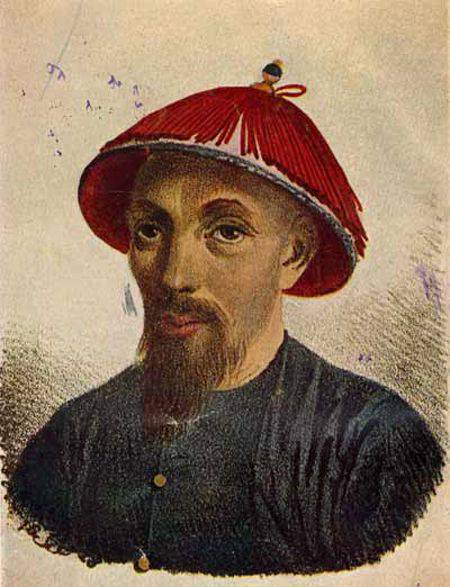
The telegraph invented by Schilling used only two wires - this was the first working model that could be applied not only for experiments, but also in practice. Data transmission was carried out by various combinations of eight black and white keys, and the receiver consisted of two arrows, the signals transmitted by wire were displayed by their location relative to the black-and-white disk. In fact, Schilling was the first in the world to use binary code, on the basis of which all digital and computer equipment operates today.
Already in 1835, the Schilling telegraph interconnected the premises of the vast Winter Palace and the palace itself with the Admiralty, and under the chairmanship of the minister of the sea, a committee was created to consider the electromagnetic telegraph. Began to conduct the first experiments on the laying of telegraph cable under the ground and water.
At the same time, the work on the method of electric detonation of sea mines proposed by Schilling did not stop. 21 March 1834 of the year on the Obvodny Canal near the Alexander Nevsky Monastery in St. Petersburg, the inventor demonstrated to Tsar Nicholas I an electrical explosion of underwater mines. From that moment on, active work began on the creation of underwater minefields in Russia.
In 1836, Schilling received a tempting offer for a lot of money to begin work on the introduction of the telegraph invented by him in England. However, the author of the invention refused to leave Russia and took up the project of the device of the first large telegraph between Peterhof and Kronstadt, for which he planned to lay wires along the bottom of the Gulf of Finland.
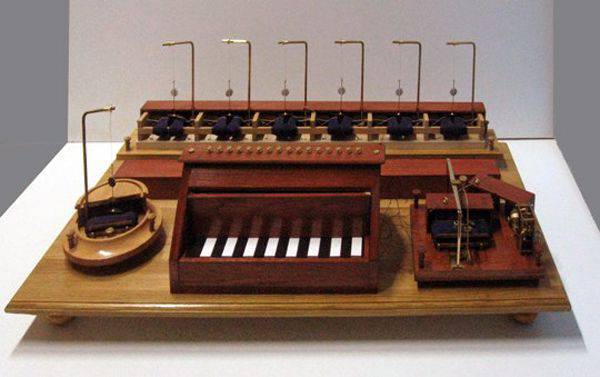
The project of such a telegraph was approved by the king of 19 in May 1837. For his underwater cable, Schilling was the first in the world to insulate wires with rubber, natural rubber. At the same time, Schilling announced the project of connecting Peterhof and St. Petersburg by telegraph, for which he planned to hang copper wire on ceramic insulators to poles along the Peterhof road. This was the first in the world offer of the modern type of electrical networks! But then the tsarist officials took Shilling's project as a wild fantasy. Adjutant General Peter Kleinmichel, the one who will build the first railway between Moscow and St. Petersburg in the near future, then laughed and told Schilling: "My dear friend, your proposal is insane, your wire wires are truly ridiculous."
Pavel Schilling never saw the realization of his visionary ideas. He died on August 6, 1837, having briefly outlived his friend Alexander Pushkin. Soon after the death of the Russian inventor, telegraph networks began to envelop the globe, and the underwater mines invented by him with electric detonation during the Crimean War of 1853-1856 securely protected Petersburg and Kronstadt from English, then dominant in the Baltic fleet.
Information